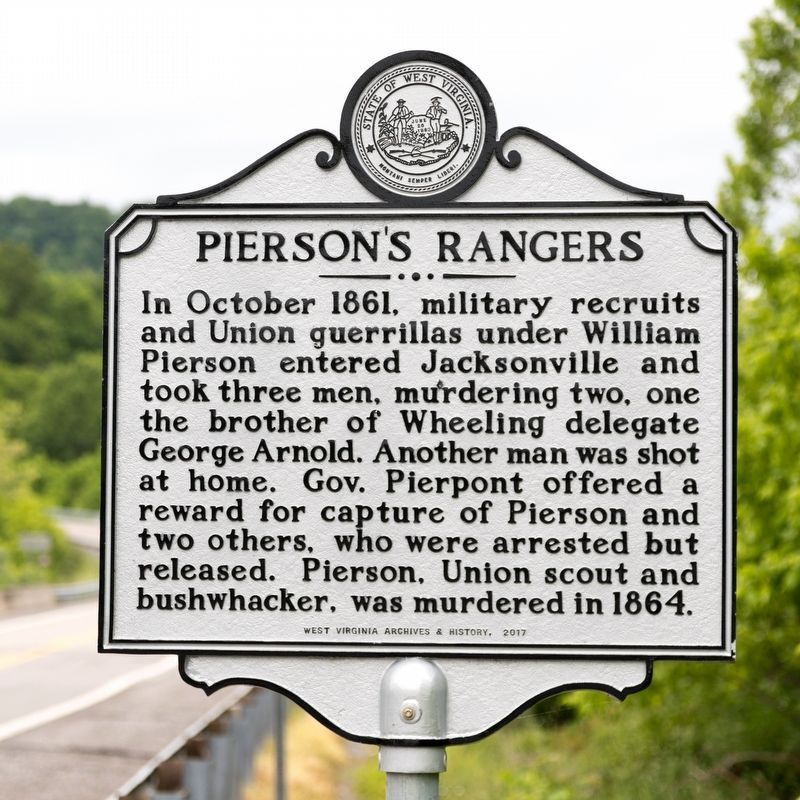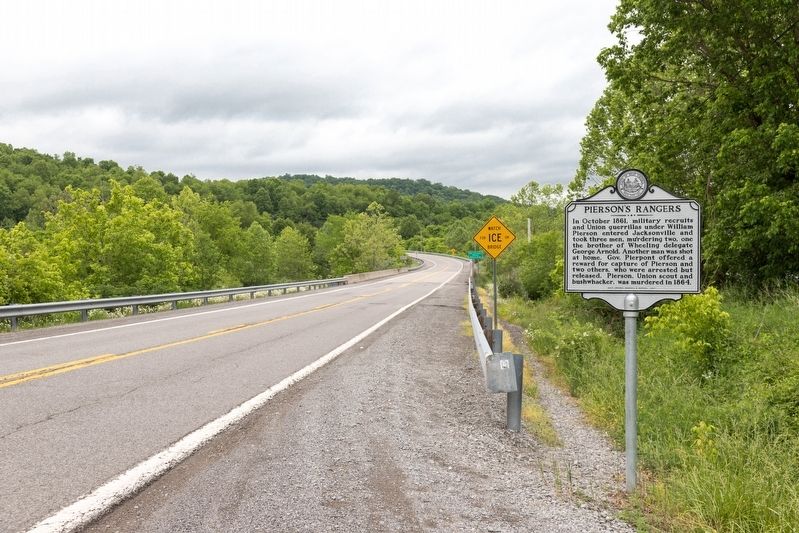Near Jacksonville in Lewis County, West Virginia — The American South (Appalachia)
Piersonís Rangers
Erected 2017 by West Virginia Archives & History.
Topics. This historical marker is listed in this topic list: War, US Civil. A significant historical month for this entry is October 1861.
Location. 38° 55.798′ N, 80° 29.55′ W. Marker is near Jacksonville, West Virginia, in Lewis County. Marker is on Oil Creek Road (County Route 23) 0.2 miles west of U.S. 19, on the left when traveling west. Touch for map. Marker is in this post office area: Walkersville WV 26447, United States of America. Touch for directions.
Other nearby markers. At least 8 other markers are within 8 miles of this marker, measured as the crow flies. Bennett-Camden (approx. 4.8 miles away); Purple Heart Memorial (approx. 5.7 miles away); Arnold - Old Hill Cemetery (approx. 7.4 miles away); Old Hill Cemetary Memorial (approx. 7.4 miles away); Withersí Grave (approx. 7.4 miles away); Brannon-Whelan House (approx. 7Ĺ miles away); Weston in the Civil War (approx. 7Ĺ miles away); Henry Flesher (approx. 7Ĺ miles away).
Also see . . . Wikipedia entry for Bushwhacker. Excerpt:
Bushwhacking was a form of guerrilla warfare common during the American Revolutionary War, War of 1812, American Civil War and other conflicts in which there were large areas of contested land and few governmental resources to control these tracts. This was particularly prevalent in rural areas during the Civil War where there were sharp divisions between those favoring the Union and Confederacy in the conflict. The perpetrators of the attacks were called bushwhackers. The term "bushwhacking" is still in use today to describe ambushes done with the aim of attrition.(Submitted on June 2, 2021.)
Bushwhackers were generally part of the irregular military forces on both sides. While bushwhackers conducted well-organized raids against the military, the most dire of the attacks involved ambushes of individuals and house raids in rural areas. In the countryside, the actions were particularly inflammatory since they frequently amounted to fighting between neighbors, often to settle personal accounts. Since the attackers were non-uniformed, the government response was complicated by trying to decide whether they were legitimate military attacks or criminal, terrorist actions.
Credits. This page was last revised on June 2, 2021. It was originally submitted on June 2, 2021, by J. J. Prats of Powell, Ohio. This page has been viewed 178 times since then and 16 times this year. Photos: 1, 2. submitted on June 2, 2021, by J. J. Prats of Powell, Ohio.

